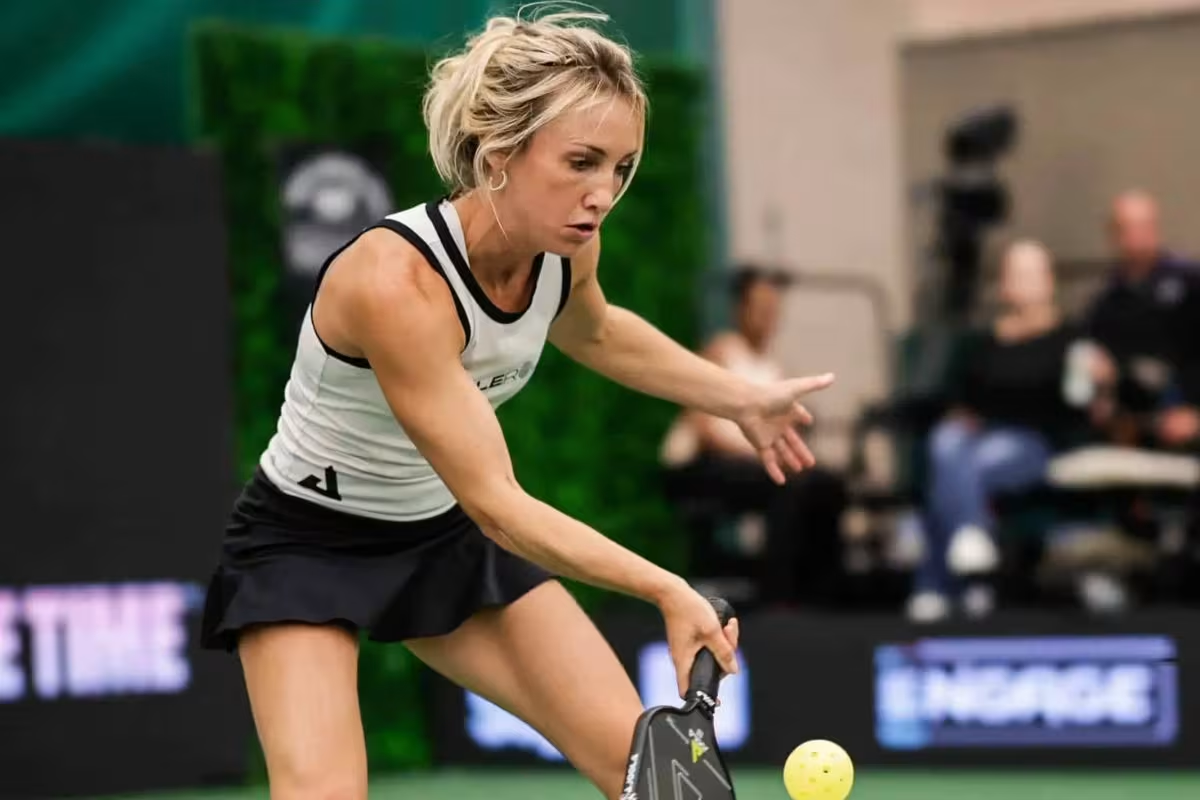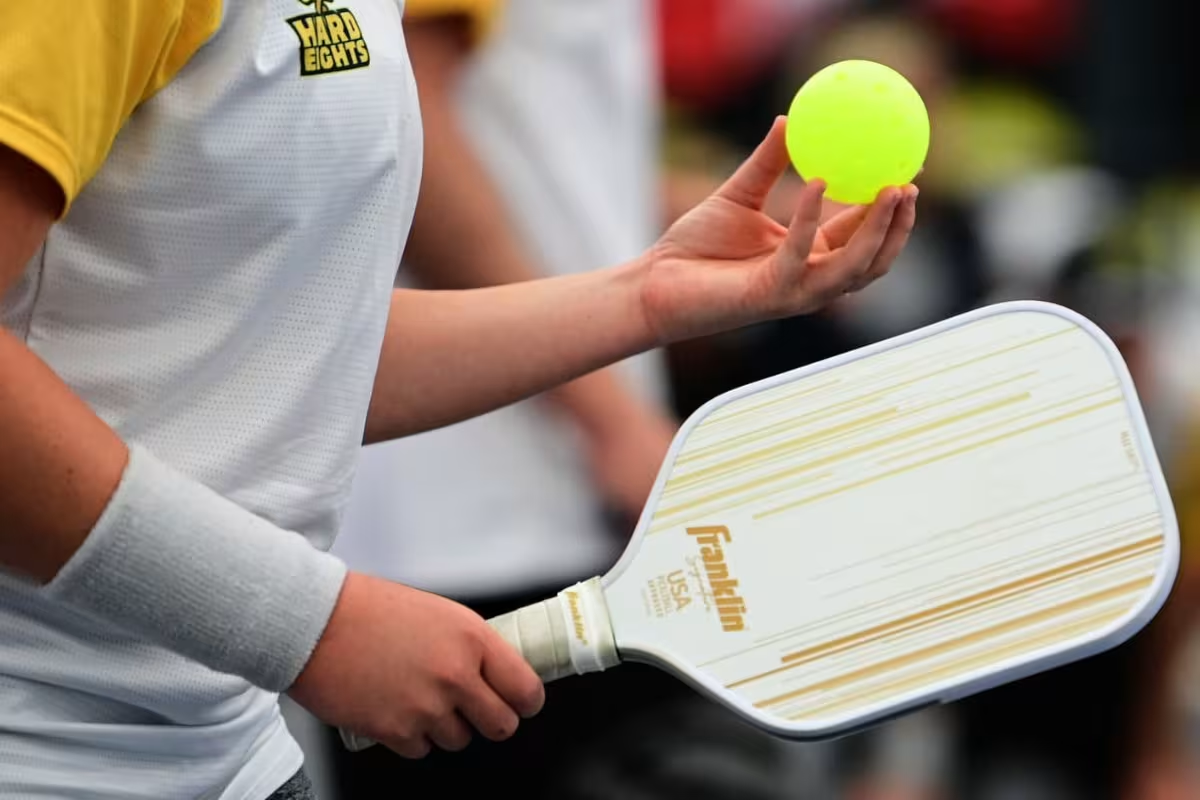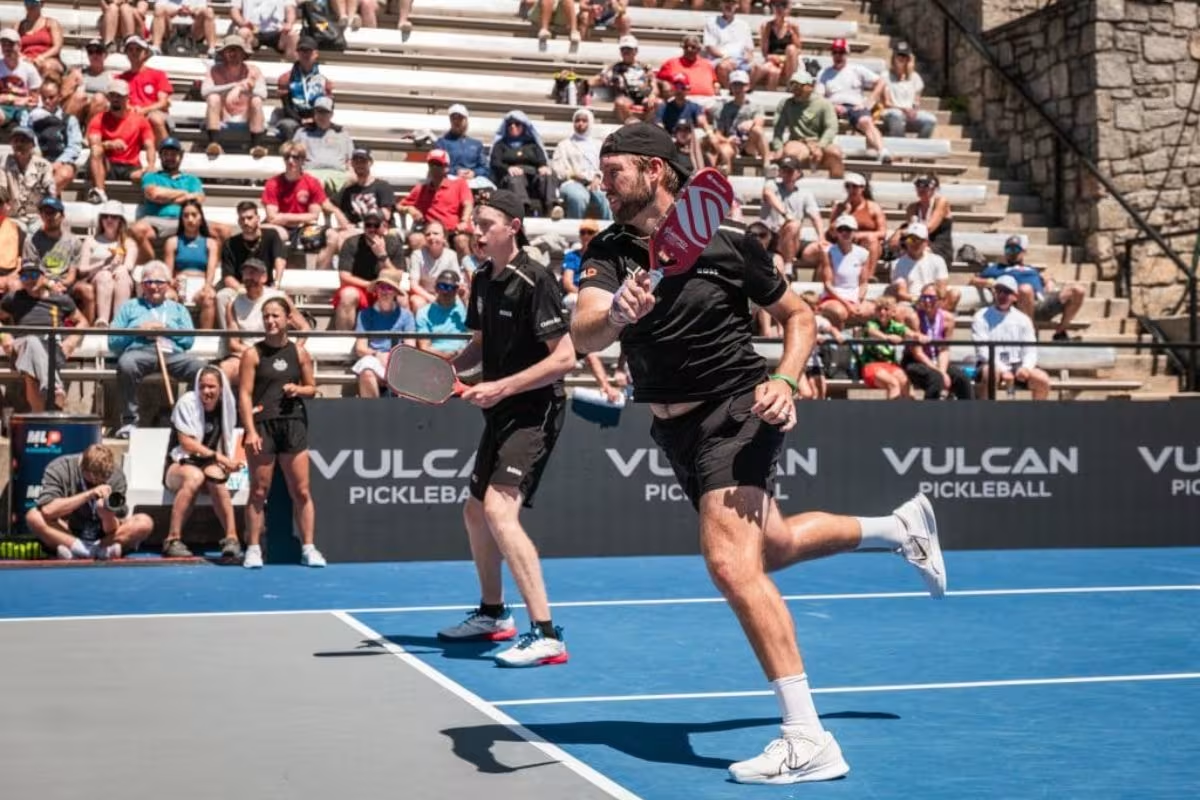The Realities of Pro Pickleball Life: Professional athletes often seem to lead a glamorous life, earning money for just a few games a year. However, the reality for professional pickleball players is quite different. They don’t have an “off-season.” Instead, they consistently push themselves to maintain high performance, traveling across the country throughout the year to compete for medals in a sport that keeps evolving. On top of that, they manage other jobs and personal commitments, making their journey even more challenging.
To gain deeper insight into what it takes to become a pro pickleball player, four professionals—Tyson McGuffin, Allyce Jones, Jack Munro, and Lina Padegimaite—shared their experiences.
The Best Parts of Becoming a Pro Pickleball Player
For Tyson McGuffin, pickleball was a sport that found him unexpectedly. While teaching tennis, a member at his club persistently urged him to try this “silly sport” called pickleball. He reluctantly entered a rundown YMCA, where he faced a packed gym with taped lines and serious competitors.
“I got my butt kicked,”-(Tyson)
However, that loss ignited a passion within him. Now, he stands as one of the sport’s top names, attributing his success to the opportunities pickleball has provided.
“Being able to take my kids and family on the road, meet new people, and see new things—memories we’ll have forever.”-(tyson)

Allyce and Lina Padegimaite emphasize their desire to fill their competitive cups and to set positive examples for their children.
“Being a role model for my son, who often comes on the road with me to these events, is incredibly important.”-(Lina)
Jack Munro, a 20-year-old balancing his professional pickleball career with studies at UT Austin, describes the incredible opportunities the sport has brought him.
“Meeting fans from all over, signing autographs, and being recognized for my content even in the UK, Germany, and Spain…it’s surreal.” – (munro)
A Breathless Schedule
The allure of playing professional pickleball can quickly fade when confronted with the reality of the travel schedule. These athletes face the challenge of balancing personal lives with the demanding pace of professional play, which can be one of the most difficult aspects of their careers.
“Being away from home, out of my typical routine, can be difficult.”-(Tyson)
With a year-round season, there is no true off-season for rest and recovery. For Tyson, April is particularly challenging, as it marks the anniversary of his father’s passing. Finding the motivation to compete during this time is tough, yet moments like winning a singles title at the US Open serve as reminders of his father’s presence and strength.
Allyce echoes these sentiments, particularly during back-to-back events between the PPA Tour and Major League Pickleball.
“I really dislike when we have a PPA progressive draw and an MLP tournament connected together. It means we’re away from home for almost two weeks, so you’re never quite on a normal routine.”-(Allyce)
The Day-to-Day is Also a Grind
In addition to competing, these pros commit countless hours to practice, gym time, and conditioning. Maintaining their bodies is crucial, as they push themselves hard for over half the year.
Lina shares the importance of physical and mental well-being.
“Being a pro athlete makes me feel like I can’t take many risks in life. At a recent event in New York City, I even found myself thinking about whether or not I should ride a bike…What if I had an accident? I am focused on longevity: I want to be the best I can be for the next decade.”-(lina)
Even during downtime at home, the demands of the sport consume much of their time. Allyce outlines her typical day when not participating in tournaments:
- 5:45-7:15 a.m.: Early Morning Ball Machine or Drilling
- 7:15-8:00 a.m.: Help my Kids off to School
- 8:15-9:00 a.m.: Drill with my Husband
- 9:00-10:30 a.m.: Drilling Session
- 10:30-12:30 p.m.: Play and Apply what I’m drilling or another 90-minute drill session
- 12:30-2:00 p.m.: Eat Small Lunch and Go workout
- 2:00-3:00 p.m.: Recovery Work
- 3:00-8:30 p.m.: Kids’ Extracurricular Activities
The challenges continue with the frequent confrontations of losses at events. Lina notes that unless one is Ben Johns or Anna Leigh Waters, the reality is that losses are inevitable.
“When a tournament doesn’t go your way, it feels like the ground is beginning to slip out from under you.”
“You put all this work into figuring out your financials, finding the right doubles partner, and everything else that goes into playing pro…it can take over a year just to find the right partner.”-(lina)
The Mental Game: What Fans Don’t See
Tyson emphasizes the importance of recognizing the mental health struggles that often accompany this lifestyle.
“I think if we talked about it more, we’d find it was common and OK to battle that stuff.”-(tyson)
He believes in the necessity of building a strong support system—coaches, family, and therapists—to maintain balance. The mental game plays a crucial role in determining not just performance but also the overall experience of being a pro athlete.
Despite the ups and downs, all players agree that the journey is worthwhile. The victories feel more rewarding, the connections stronger, and the love for the game continues to grow.
Recognizing the Dedication of Professional Pickleball Players
Whether or not fans regularly follow their matches, professional pickleball players deserve recognition and appreciation. Their schedules are often hectic, their minds and bodies endure significant strain, and they are expected to adapt as the game evolves.
These athletes drive the sport forward, creating a foundation for pickleball’s growing prominence while making history at every event. Although they willingly embrace this lifestyle, it is essential to recognize and appreciate the dedication and sacrifices they make.



